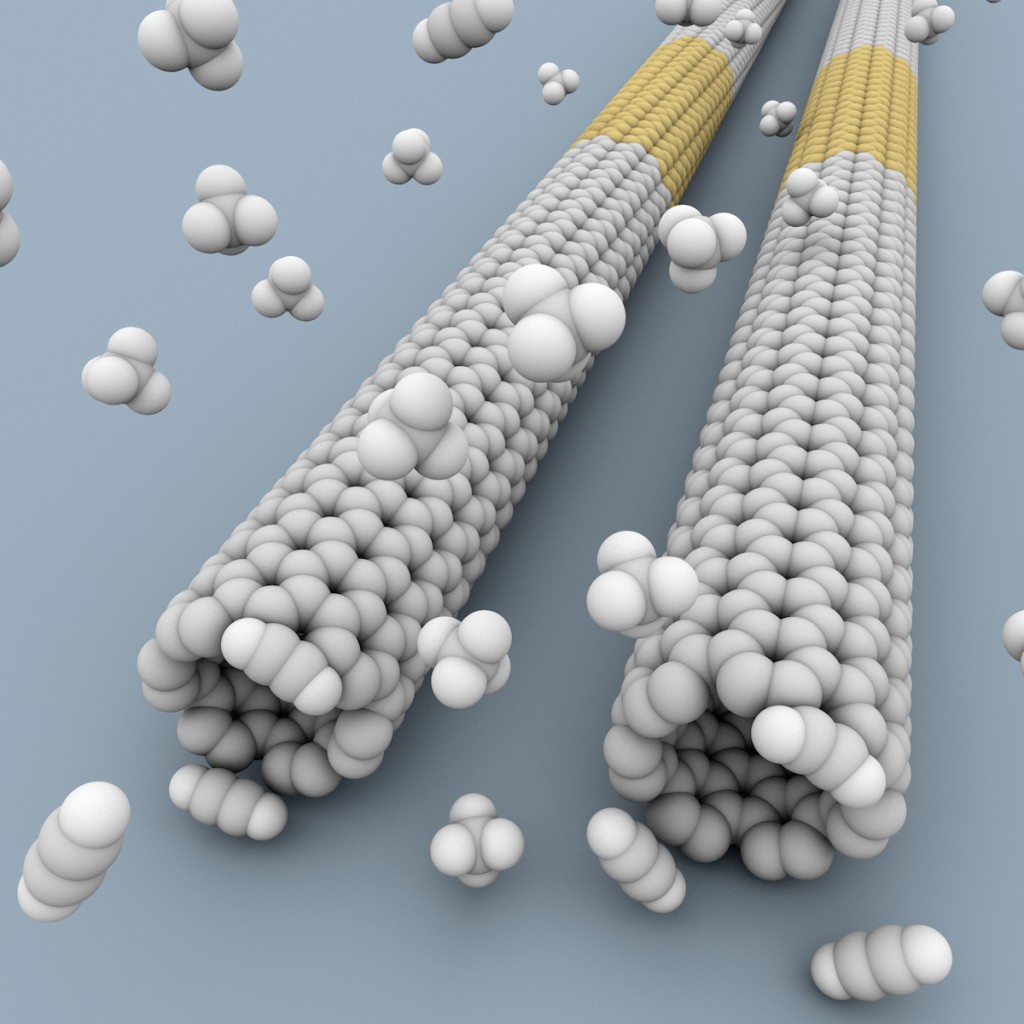Mass Production Of Carbon Nanotube Made Possible Thanks To Japanese Researchers
Gabriel Roşu / 11 years ago

First of all, carbon nanotubes, or CNTs, are allotropes of carbon with a cylindrical nanostructure. Short version of the story, they are favorable materials in nanotechnology, electronics and optics for their unusual and extraordinary properties in terms of thermal conductivity, mechanical and electrical properties. You can read more about them here. The problem is that it’s hard to make them, and therefore mass production is impossible. Or at least it was.
AIST reportedly developed a way to properly manufacture single-wall, or monolayer, carbon nanotubes in quantities that are considered favorable for the eventual mass production. They have used a method called enhanced Direct Injection Pyrolytic Synthesis, or eDIPS, which aims to be a modified production phase based on the chemical vapor deposition used in the semiconductor industry to make thin film products and components. Meijo Nano Carbon Co. Ltd. provided the necessary industrial foundation for this system, and has moved forward to the development of a prototype production plant that demonstrates their method’s improved production rate and efficiency.
The report states that they were able to produce monolayers 100 times faster and with a quality rate of 10 to 20 times higher than before. This might not be so interesting for some of you, but let’s take a more practical approach on this matter. For example, Zyvex Technologies has built a 54-inch maritime vessel called the Piranha Unmanned Surface Vessel with the help of carbon nanotubes, which weighs only 8,000 lbs and has the capacity to carry a load of 15,000 lbs over a distance of 2,500 miles. And the use of carbon nanotubes does not stop at the vessel manufacturing industry. It is used in the manufacturing of wind turbines, car parts, sports equipment such as baseball bats, hunting arrows, surfboards, skis, and in many more manufacturing departments.
The mass production of carbon nanotubes will be an excellent breakthrough in terms of manufacturing goods and their use should have a significant increase in the quality as well. But the real question here is, will there be a breakthrough in terms of prices as well? We will just have to wait and see.
Thank you VR-Zone for providing us with this information
Image courtesy of USC.edu



















